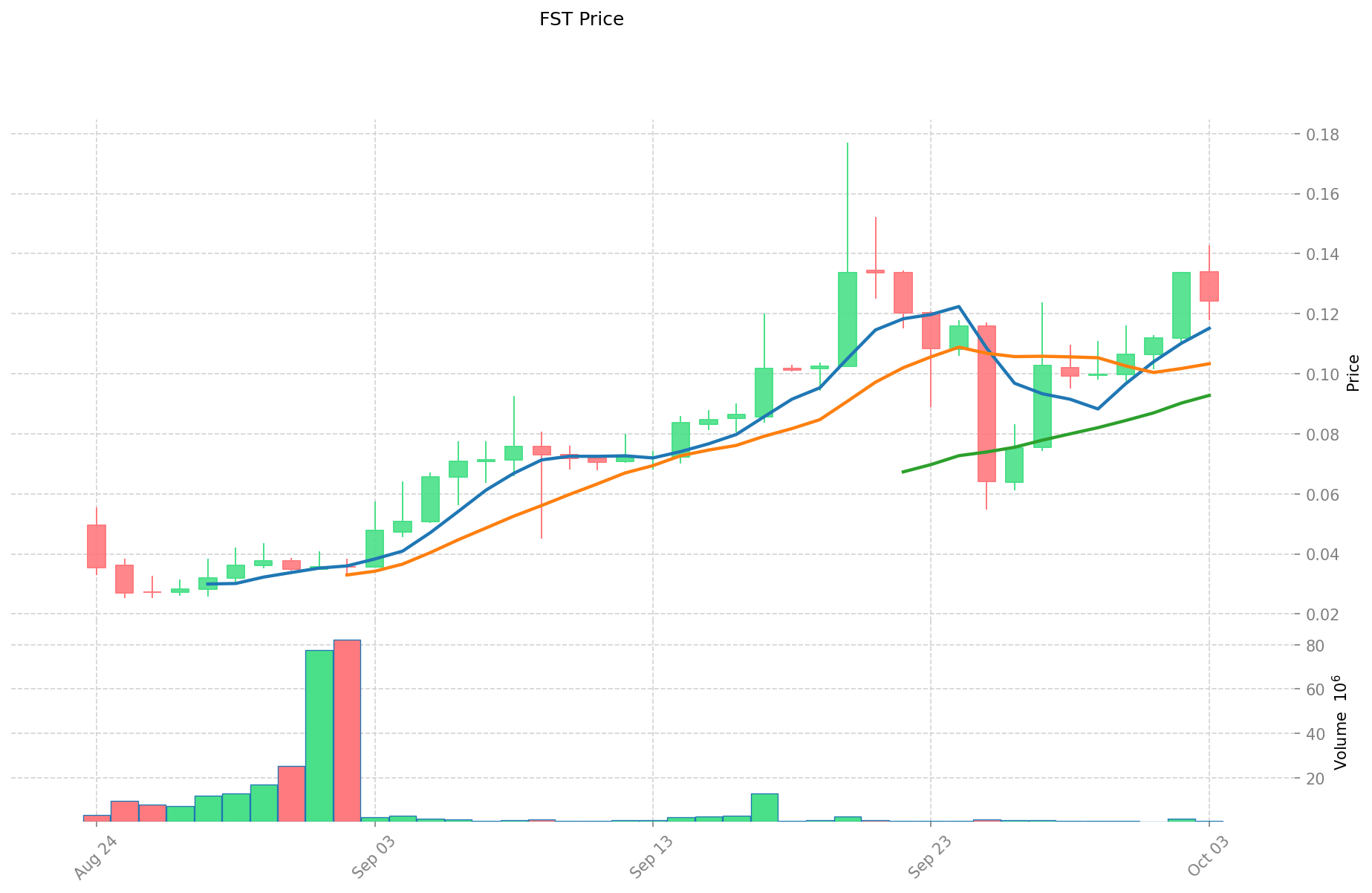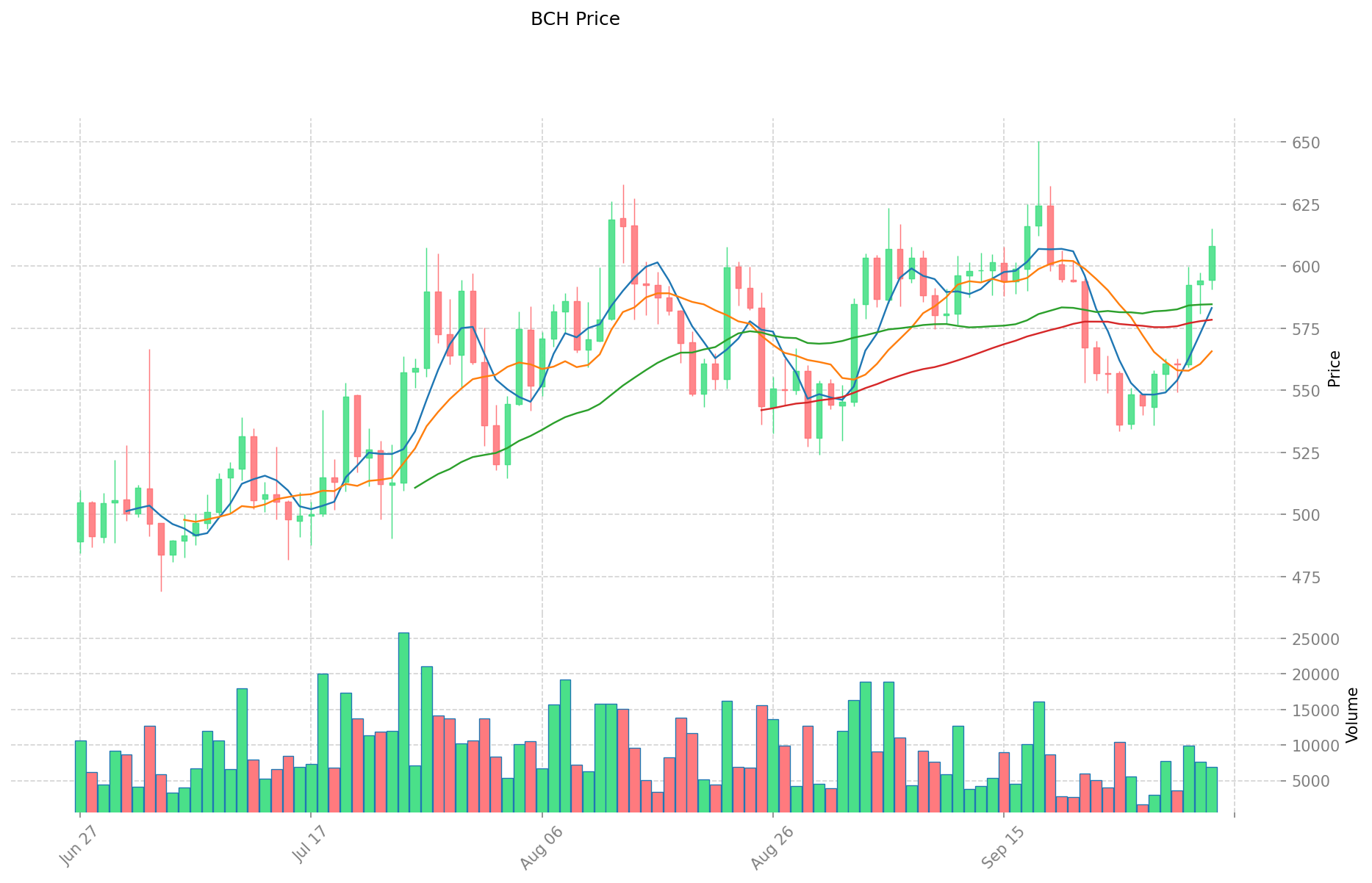FST ve BCH: Finansal Hizmetler Teknolojileri ile Blockchain Nakit Sistemlerinin Karşılaştırmalı Analizi


Giriş: FST ve BCH Yatırım Karşılaştırması
Kripto para piyasasında FreeStyle Classic Token ile Bitcoin Cash karşılaştırması, yatırımcıların her zaman göz ardı edemeyeceği bir başlık olarak öne çıkıyor. Bu iki kripto varlık; piyasa değeri sıralaması, kullanım alanları ve fiyat performansı açısından dikkat çekici farklar gösterirken, kripto para dünyasında ayrı konumlara sahipler.
FreeStyle Classic Token (FST): Lansmanından bu yana, Web3 döneminde kültürel temsil ve topluluk odaklı ekosistemlere verdiği önemle piyasa tarafından benimsenmiştir.
Bitcoin Cash (BCH): 2017’de Bitcoin’in hard fork’u olarak piyasaya sürülen BCH, zincir üstü ölçeklenme ve küresel yaygınlık üzerine odaklanmış bir kripto para olarak bilinir; işlem hacmi ve piyasa değeri açısından en yüksek seviyedeki coin’ler arasında yer alır.
Bu makalede, FST ve BCH’nin yatırım değerleri kapsamlı bir biçimde karşılaştırılacak; tarihsel fiyat eğilimleri, arz mekanizmaları, kurumsal benimseme düzeyleri, teknik ekosistem ve geleceğe yönelik tahminler analiz edilerek yatırımcıların en çok merak ettiği soruya yanıt aranacaktır:
"Şu anda hangisi daha avantajlı bir alım fırsatı?"
I. Fiyat Geçmişi Karşılaştırması ve Mevcut Piyasa Durumu
FreeStyle Classic Token (FST) ve Bitcoin Cash (BCH) Tarihsel Fiyat Eğilimleri
- 2025: FST piyasaya sürüldü ve ilk işlem döneminde ciddi fiyat dalgalanmaları yaşadı.
- 2017: BCH, Bitcoin’in hard fork’u ile doğdu ve piyasaya çıktığı dönemde fiyatında geniş çaplı dalgalanmalar görüldü.
- Kıyaslama: Son piyasa döngüsünde FST, tüm zamanların en yükseği olan $0,177 seviyesini gördükten sonra $0,0252’ye kadar geriledi; BCH ise yerleşik konumu sayesinde daha istikrarlı bir performans sergiledi.
Güncel Piyasa Durumu (04 Ekim 2025)
- FST güncel fiyatı: $0,12424
- BCH güncel fiyatı: $609,54
- 24 saatlik işlem hacmi: $65.062,51 (FST) / $4.184.370,99 (BCH)
- Piyasa Duyarlılık Endeksi: 64 (Açgözlülük)
Gerçek zamanlı fiyatlar için tıklayın:
- FST güncel fiyatı için Piyasa Fiyatı
- BCH güncel fiyatı için Piyasa Fiyatı


FST ve BCH Yatırım Değerini Etkileyen Temel Faktörler
Arz Mekanizmaları (Token Ekonomisi)
- FST: Arz ve talep ilişkisiyle şekillenen piyasa dinamikleri
- BCH: Bitcoin Cash, Bitcoin’in modeline benzer yarılanma mekanizmasını uygular
- 📌 Tarihsel desen: Bu arz mekanizmaları, her iki varlıkta da döngüsel fiyat hareketlerini tetikler
Kurumsal Benimseme ve Piyasa Kullanımları
- Kurumsal portföyler: Piyasa duyarlılığı ve yatırım eğilimleri, her iki varlıkta da kurumsal ilgiyi belirler
- Kurumsal kullanım: BCH, Bitcoin kökeniyle sınır ötesi ödemeler ve mutabakatlarda önemli potansiyele sahiptir
- Regülasyon: Her iki token, farklı ülkelerde farklı regülasyonlarla karşılaşabilir ve bu durum piyasa değerlerini etkiler
Teknik Gelişim ve Ekosistem Oluşumu
- Teknolojik yenilik: Her iki kripto para, rekabetçi kalabilmek için teknolojik altyapılarını sürekli geliştiriyor
- Piyasa rekabeti: FST ve BCH, çok sayıda rakip dijital varlıkla dolu bir piyasada işlem görüyor
- Ekosistem karşılaştırması: BCH, Bitcoin fork’u olmanın avantajıyla ödeme sistemlerinde daha yaygın kullanılıyor
Makroekonomik Faktörler ve Piyasa Döngüleri
- Enflasyon ortamı performansı: Her iki varlık, genel ekonomik göstergelerden etkileniyor
- Para politikası etkisi: Faiz oranları ve likidite koşulları, işlem hacmi ve fiyatları doğrudan etkiler
- Jeopolitik unsurlar: Sınır ötesi işlem talepleri ve uluslararası gelişmeler, her iki tokenın benimsenme oranını etkiler
III. 2025-2030 Fiyat Tahmini: FST ve BCH
Kısa Vadeli Tahmin (2025)
- FST: Temkinli $0,084 - $0,124 | İyimser $0,124 - $0,142
- BCH: Temkinli $401,44 - $608,24 | İyimser $608,24 - $650,82
Orta Vadeli Tahmin (2027)
- FST büyüme fazına geçebilir, öngörülen fiyat aralığı $0,139 - $0,175
- BCH istikrarlı büyüme fazına geçebilir, öngörülen fiyat aralığı $539,44 - $749,96
- Ana itici güçler: Kurumsal sermaye girişi, ETF, ekosistem gelişimi
Uzun Vadeli Tahmin (2030)
- FST: Temel senaryo $0,195 - $0,225 | İyimser senaryo $0,225 - $0,326
- BCH: Temel senaryo $727,16 - $845,53 | İyimser senaryo $845,53 - $1.006,18
Yasal Uyarı: Bu analiz bilgilendirme amaçlıdır; yatırım tavsiyesi değildir. Kripto para piyasaları son derece volatil ve öngörülemezdir. Yatırım kararı almadan önce kendi araştırmanızı yapınız.
FST:
| Yıl | Tahmini En Yüksek Fiyat | Tahmini Ortalama Fiyat | Tahmini En Düşük Fiyat | Fiyat Değişimi |
|---|---|---|---|---|
| 2025 | 0,141702 | 0,1243 | 0,084524 | 0 |
| 2026 | 0,18221137 | 0,133001 | 0,10374078 | 7 |
| 2027 | 0,17494286535 | 0,157606185 | 0,1386934428 | 26 |
| 2028 | 0,23112158999325 | 0,166274525175 | 0,13800785589525 | 33 |
| 2029 | 0,250359552555997 | 0,198698057584125 | 0,123192795702157 | 59 |
| 2030 | 0,325566767351588 | 0,224528805070061 | 0,195340060410953 | 80 |
BCH:
| Yıl | Tahmini En Yüksek Fiyat | Tahmini Ortalama Fiyat | Tahmini En Düşük Fiyat | Fiyat Değişimi |
|---|---|---|---|---|
| 2025 | 650,8168 | 608,24 | 401,4384 | 0 |
| 2026 | 686,185956 | 629,5284 | 446,965164 | 3 |
| 2027 | 749,95718292 | 657,857178 | 539,44288596 | 7 |
| 2028 | 760,2197548968 | 703,90718046 | 387,148949253 | 15 |
| 2029 | 959,003142658704 | 732,0634676784 | 387,993637869552 | 20 |
| 2030 | 1.006,18463315057688 | 845,533305168552 | 727,15864244495472 | 38 |
IV. Yatırım Stratejisi Karşılaştırması: FST ve BCH
Uzun Vadeli ve Kısa Vadeli Yatırım Yaklaşımı
- FST: Web3 kültürel ekosistemleri ve topluluk tabanlı projelere odaklanan yatırımcılar için uygundur
- BCH: Geniş ödeme ağına sahip, köklü bir ağ arayan yatırımcılar için uygundur
Risk Yönetimi ve Varlık Dağılımı
- Temkinli yatırımcılar: FST %20 - BCH %80
- Agresif yatırımcılar: FST %40 - BCH %60
- Koruma araçları: Stablecoin ayırma, opsiyonlar, çoklu para birimi portföyleri
V. Potansiyel Risk Karşılaştırması
Piyasa Riski
- FST: Daha yeni olması nedeniyle yüksek volatilite
- BCH: Genel kripto para piyasası trendlerine karşı duyarlıdır
Teknik Risk
- FST: Ölçeklenebilirlik ve ağ istikrarı
- BCH: Madencilikte merkezileşme ve olası güvenlik açıkları
Düzenleyici Risk
- Küresel düzenleyici politikalar, her iki varlığı farklı biçimde etkileyebilir; BCH, Bitcoin ile olan bağlantısı nedeniyle daha fazla incelemeye tabi olabilir
VI. Sonuç: Hangisi Daha Avantajlı Alım?
📌 Yatırım Değeri Özeti:
- FST avantajları: Kültürel temsil odağı, Web3 ekosistemlerinde büyüme potansiyeli
- BCH avantajları: Yerleşik ağ, ödeme sistemlerinde yaygın kullanım, Bitcoin kökeni
✅ Yatırım Tavsiyesi:
- Yeni yatırımcılar: BCH’nin yerleşik konumu nedeniyle dengeli bir yaklaşım tercih edebilir
- Deneyimli yatırımcılar: Her iki varlığı değerlendirebilir, FST’ye daha fazla ağırlık vererek büyüme potansiyeli arayabilir
- Kurumsal yatırımcılar: BCH’nin likidite ve piyasa değerini dikkate almalı, FST’nin ekosistem gelişimini takip etmelidir
⚠️ Risk Uyarısı: Kripto para piyasaları yüksek volatiliteye sahiptir. Bu makale yatırım tavsiyesi değildir.
VII. Sıkça Sorulan Sorular
S1: FST ile BCH arasındaki ana farklar nelerdir? C: FST, kültürel temsil ve Web3 ekosistemlerine odaklanırken BCH, zincir üstü ölçeklenme ve küresel yaygınlık hedefleyen bir Bitcoin fork’udur. FST daha yeni ve volatilitesi yüksek, BCH ise kripto para piyasasında daha köklü bir varlıktır.
S2: Son dönemde hangi kripto para daha istikrarlı fiyat performansı gösterdi? C: Son piyasa verilerine göre BCH, köklü konumu sayesinde daha istikrarlı bir fiyat performansı sergilemiştir. FST ise yeni olduğu için lansmandan bu yana yüksek fiyat dalgalanmaları yaşamıştır.
S3: FST ve BCH'nin arz mekanizmaları nasıl farklılık gösteriyor? C: FST’nin arzı piyasa dinamikleri ile belirlenirken BCH, Bitcoin'in modeline benzer bir yarılanma mekanizması sayesinde arzını zaman içinde düzenler.
S4: FST ve BCH'nin yatırım değerini etkileyen ana etkenler nelerdir? C: Temel faktörler; arz mekanizmaları, kurumsal benimseme, teknik gelişim, ekosistem oluşturma, makroekonomik göstergeler ve piyasa döngüleridir. Bu etkenler iki kripto parayı farklı derecelerde etkiler.
S5: FST ve BCH'nin uzun vadeli fiyat tahminleri nasıl karşılaştırılıyor? C: 2030 yılı için FST’nin iyimser senaryosu $0,225 - $0,326 aralığına, BCH’nin iyimser senaryosu ise $845,53 - $1.006,18 aralığına işaret etmektedir. Ancak bu tahminler spekülatiftir ve temkinli yaklaşılmalıdır.
S6: FST ve BCH yatırımlarında öne çıkan başlıca riskler nelerdir? C: Her iki varlık piyasa, teknik ve düzenleyici risklerle karşı karşıyadır. FST, yeni olmasından dolayı daha yüksek volatiliteye sahipken; BCH, Bitcoin ile ilişkilendirildiği için daha fazla düzenleyici incelemeye maruz kalabilir.
S7: Yatırımcılar portföylerini FST ve BCH arasında nasıl dağıtmalı? C: Temkinli yatırımcılar %20 FST ve %80 BCH, daha agresif yatırımcılar ise %40 FST ve %60 BCH seçebilir. Portföy dağılımı, kişisel risk toleransı ve yatırım hedeflerine göre şekillenmelidir.

Bitcoin Cash (BCH) Fiyat Analizi ve 2025 Yatırım Görünümü

Kripto Çöküşü mü Yoksa Sadece Düzeltme mi?

2025 BCH Fiyat Tahmini: Bitcoin Cash’in Olası Büyüme Faktörleri ve Piyasa Eğilimlerinin Analizi

2025'te Kripto Boğa Piyasasının 5 Temel Göstergesi

Corn (CORN) Yatırım İçin Uygun mu?: Fiyat Hareketleri, Piyasa Dinamikleri ve Tarımsal Emtiaların Uzun Vadeli Beklentilerinin Değerlendirilmesi

BTC vs ZIL: Bitcoin'ın Değer Saklama Özelliği ile Zilliqa'nın Yüksek Performanslı Blockchain Çözümünün Kıyaslanması

Kripto piyasasına yeni adım atanlar için Gate ETF Kaldıraçlı Tokenlar Ticaret Rehberi: Düşük başlangıç seviyeli, yüksek getirili araçların detaylı açıklaması

SEC, Ondo Finance hakkındaki soruşturmayı sonlandırdı: Bu durum DeFi token geliştirme süreçleri ve kripto uyumluluğu açısından ne ifade ediyor?

20 Hafta Önce Ne Kadar Süre Geçti?

USDT’nin Düzenleyici Olarak Tanınması: Stablecoin’ler ADGM’de Uyumluluğu Nasıl Sağlar

Sanal Visa Kartınızı Nasıl Nakit Paraya Çevirirsiniz





